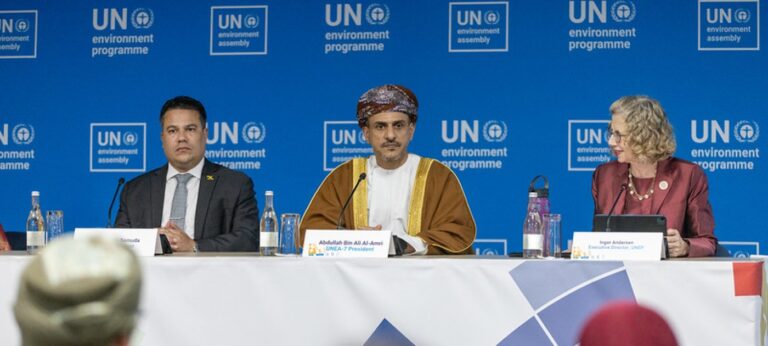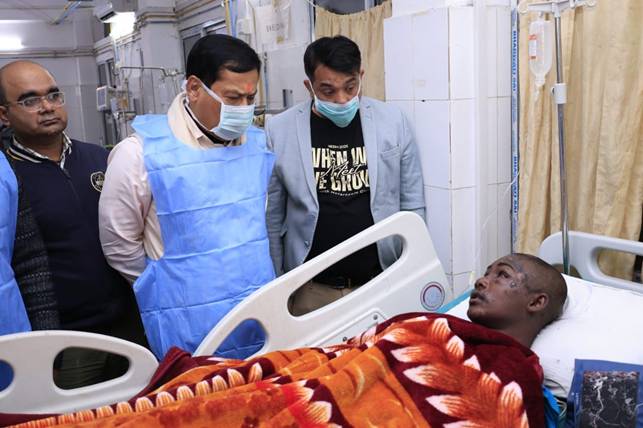
Geneva/New York/Washington D.C.: The advancements made over the past decades in child survival are now jeopardized due to major donors signaling substantial reductions in aid funding, the United Nations warned today.
This decline in global financial support for critical child survival initiatives is leading to shortages of healthcare professionals, the shutdown of clinics, interruptions in vaccination programmes, and a scarcity of vital resources like malaria treatments, according to two new reports released today by the United Nations Inter-agency Group for Child Mortality Estimation (UN IGME).
The repercussions of these funding cuts are particularly severe in regions facing humanitarian crises, countries burdened by debt, and areas already grappling with elevated child mortality rates.
Furthermore, the Inter-agency Group cautioned that these global funding reductions could hinder monitoring and tracking efforts, complicating the ability to assist the most vulnerable children.
“From tackling malaria to preventing stillbirths and ensuring evidence-based care for the tiniest babies, we can make a difference for millions of families,” said Dr Tedros Adhanom Ghebreyesus, Director-General of the World Health Organization. “In the face of global funding cuts, there is a need more than ever to step up collaboration to protect and improve children’s health.”
The momentum for improving child survival rates had begun to wane even prior to the ongoing funding crisis. Since 2015, the annual rate of reduction of under-five mortality has slowed by 42 per cent, and stillbirth reduction has slowed by 53 per cent, compared to 2000–2015.
Since 2000, child deaths have dropped by more than half and stillbirths by over a third, fuelled by sustained investments in child survival worldwide. In 2022, the world reached a historic milestone when child deaths dropped slightly below 5 million for the first time. The number of children dying globally before their fifth birthday declined to 4.8 million in 2023, while stillbirths declined modestly, still remaining around 1.9 million.
However, progress has slowed, and too many children are still being lost to preventable causes.
“Millions of children are alive today because of the global commitment to proven interventions, such as vaccines, nutrition, and access to safe water and basic sanitation,” said UNICEF Executive Director Catherine Russell. “Bringing preventable child deaths to a record low is a remarkable achievement. But without the right policy choices and adequate investment, we risk reversing these hard-earned gains, with millions more children dying from preventable causes. We cannot allow that to happen.”
Almost half of under-five deaths happen within the first month of life, mostly due to premature birth and complications during labour. Beyond the newborn period, infectious diseases, including acute respiratory infections such as pneumonia, malaria, and diarrhoea, are the leading causes of preventable child death. Meanwhile, 45 per cent of late stillbirths occur during labour, often due to maternal infections, prolonged or obstructed labour, and lack of timely medical intervention.
Better access to quality maternal, newborn, and child health care at all levels of the health system will save many more lives, according to the reports. This includes promotive and preventive care in communities, timely visits to health facilities and health professionals at birth, high-quality antenatal and postnatal care, well-child preventive care such as routine vaccinations and comprehensive nutrition programmes, diagnosis and treatment for common childhood illnesses, and specialized care for small and sick newborns.
“Most preventable child deaths occur in low-income countries, where essential services, vaccines, and treatments are often inaccessible”, said Juan Pablo Uribe, World Bank Global Director for Health and Director of the Global Financing Facility. “Investing in children’s health ensures their survival, education, and future contributions to the workforce. With strategic investments and strong political will, we can continue to reduce child mortality, unlocking economic growth and employment opportunities that benefit the entire world.”
The reports also show that where a child is born greatly influences their chances of survival. The risk of death before age five is 80 times higher in the highest-mortality country than the lowest-mortality country, for example, while a child born in sub-Saharan Africa is on average 18 times more likely to die before turning five than one born in Australia and New Zealand. Within countries, the poorest children, those living in rural areas, and those with less-educated mothers face higher risks.
Stillbirth disparities are just as severe, with nearly 80 per cent occurring in sub-Saharan Africa and Southern Asia, where women are six to eight times more likely to experience a stillbirth than women in Europe or North America. Meanwhile, women in low-income countries are eight times more likely to experience a stillbirth than those in high-income countries.
“Disparities in child mortality across and within nations remain one of the greatest challenges of our time,” said the UN DESA Under-Secretary-General, Li Junhua. “Reducing such differences is not just a moral imperative but also a fundamental step towards sustainable development and global equity. Every child deserves a fair chance at life, and it is our collective responsibility to ensure that no child is left behind.”
UN IGME members call on governments, donors, and partners across the private and public sectors to protect the hard-won gains in saving children’s lives and accelerate efforts. Increased investments, service integration, and innovations are urgently needed to scale up access to proven life-saving health, nutrition, and social protection services for children and pregnant mothers.
– global bihari bureau





